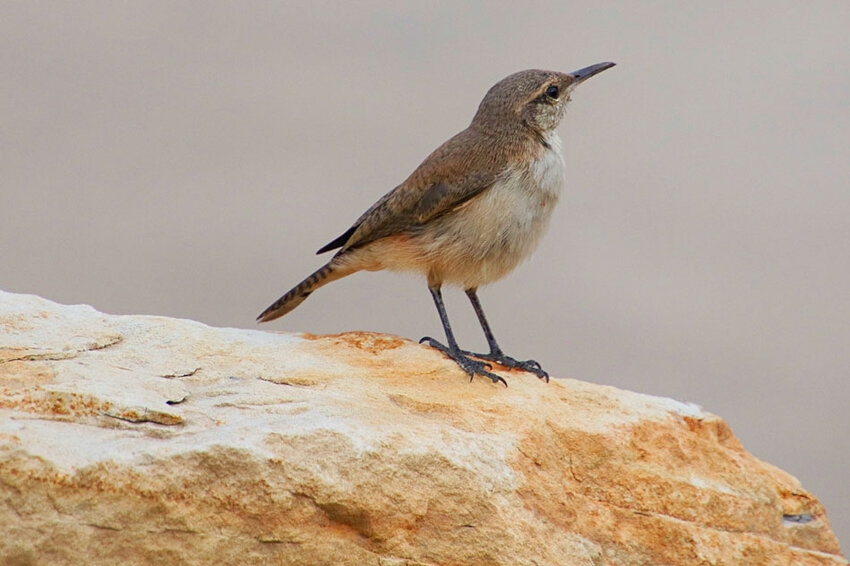
Photo courtesy Charles Martinez
This week’s Bird of the Week, compliments of the Weminuche Audubon Society and Audubon Rockies, is the rock wren.
Typically a wren is a small, brown bird, both active and secretive, traits that can make identification a challenge. Consideration of habitat type is an important key when deciding the correct species in this family of birds.
Rock wren is a fit name for this bird that inhabits dry, rocky, sparsely vegetated habitats of the West, even thriving in desert environments where few other birds survive. It is so well adapted to dry environments that it is not known to drink water, even when it is readily available.
A narrow head and long, thin bill allows the rock wren to search for insects and spiders in the rock crevices of its home. A gray-brown back speckled with white helps it to blend in as it hops among the rocks searching for food. Males sing their loud songs from a prominent perch among the rocks while bouncing up and down in a motion compared to knee bends.
Rocks are an important feature in this bird’s nest, often hidden in a crevice or opening among them. Small, flat rocks are carefully laid on the floor of the nest area and in the entryway, creating a stone walkway to the nest. Some chambers have been found constructed with more than 1,500 small stones, each transported in the bill of this small bird. The function of this stonemasonry is not clearly understood.
In summer, rock wrens are found from southern British Columbia through the western states into Mexico and Central America. Northern birds move south for the winter and they are usually gone from our area by mid-September.
For information on events, visit www.weminucheaudubon.org and www.facebook.com/weminucheaudubon/.